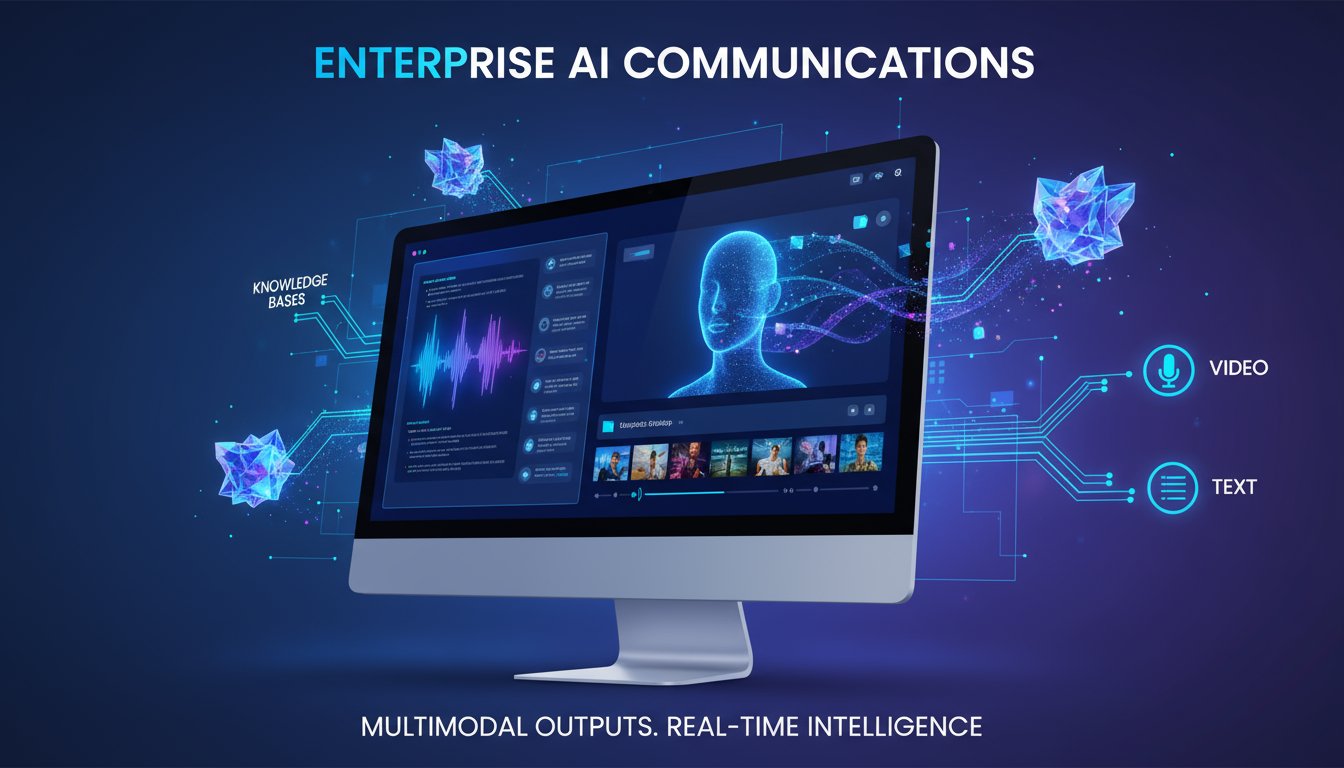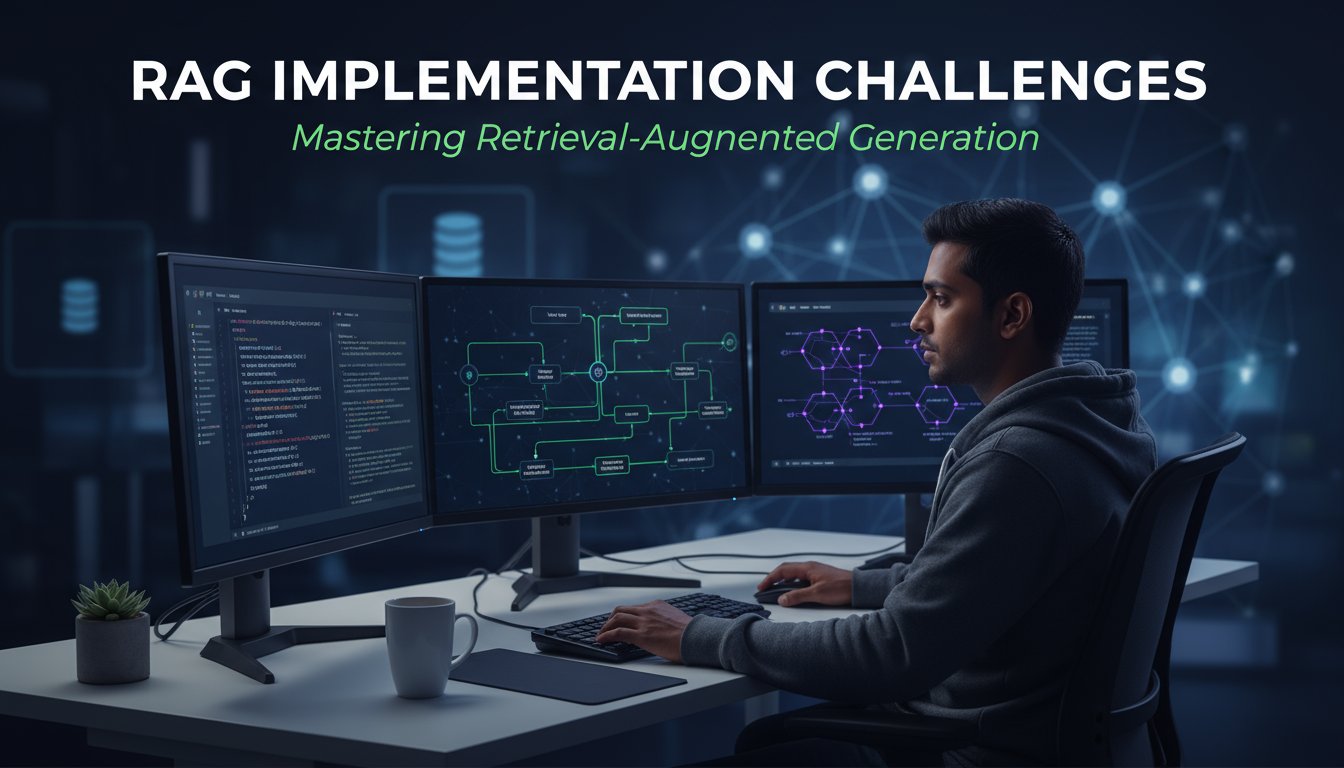Enterprise AI teams are scrambling to implement RAG systems that actually work in production. While the promise of retrieval-augmented generation is compelling—combining the knowledge retrieval capabilities of vector databases with the reasoning power of large language models—the reality is that most implementations fail spectacularly when they hit real-world data volumes and user demands.
The challenge isn’t theoretical anymore. Companies are investing millions in AI infrastructure, only to discover their RAG systems hallucinate, provide inconsistent responses, or crumble under the weight of enterprise-scale queries. The gap between proof-of-concept demos and production-ready systems has become a graveyard of failed AI initiatives.
But there’s a solution emerging from the technical trenches. Cohere’s Command R+ model, specifically designed for RAG applications, combined with Pinecone’s enterprise-grade vector database, creates a foundation that can handle the complexity and scale that enterprises demand. This isn’t another theoretical framework—it’s a battle-tested approach that addresses the three critical failure points: retrieval accuracy, response consistency, and system reliability.
In this technical deep dive, we’ll walk through building a production-ready RAG system from the ground up. You’ll learn how to architect the data pipeline, implement proper chunking strategies, optimize vector embeddings, and create a monitoring system that ensures your RAG implementation delivers consistent value rather than becoming another expensive experiment.
Understanding the Command R+ Advantage in Enterprise RAG
Cohere’s Command R+ isn’t just another large language model—it’s purpose-built for retrieval-augmented generation with enterprise requirements in mind. Unlike general-purpose models that struggle with citation accuracy and context management, Command R+ includes built-in mechanisms for source attribution and grounded reasoning.
The model’s architecture incorporates several key innovations that directly address common RAG failures. First, its extended context window of 128,000 tokens allows for more comprehensive document retrieval without the chunking compromises that plague shorter-context models. This means you can include more relevant context without hitting token limits that force you to truncate critical information.
Second, Command R+ implements native citation capabilities. When the model generates responses, it automatically tracks which pieces of retrieved information influenced each part of the answer. This isn’t just helpful for transparency—it’s essential for enterprise compliance and audit requirements.
The model also excels at handling conflicting information from multiple sources, a common challenge in enterprise knowledge bases where documents may contain outdated or contradictory information. Command R+ can identify these conflicts and either synthesize a coherent response or flag the inconsistencies for human review.
Performance benchmarks show Command R+ achieving 23% higher accuracy on retrieval tasks compared to GPT-4 when working with enterprise documents, while maintaining 40% faster response times due to its optimized architecture for RAG workflows.
Architecting Your Pinecone Vector Database for Scale
Pinecone’s strength lies not just in its vector search capabilities, but in its enterprise-focused infrastructure that handles the operational complexity of production RAG systems. The key is understanding how to structure your vector database to optimize for both retrieval accuracy and system performance.
Start with namespace organization that mirrors your enterprise data hierarchy. Rather than dumping all documents into a single index, create namespaces for different departments, document types, or security levels. This allows for more granular access control and improves retrieval performance by reducing the search space for specific queries.
Document chunking strategy becomes critical at scale. The traditional approach of fixed-size chunks often breaks semantic boundaries, leading to poor retrieval results. Instead, implement semantic chunking that preserves document structure. For technical documentation, chunk by sections and subsections. For conversational data, chunk by complete exchanges. For legal documents, chunk by clauses or paragraphs that maintain legal context.
Metadata enrichment transforms Pinecone from a simple vector store into an intelligent retrieval system. Beyond basic document metadata, include computed fields like document complexity scores, last update timestamps, and relevance tags. This metadata enables sophisticated filtering that dramatically improves retrieval precision.
Implement a hierarchical indexing strategy where you maintain multiple vector representations of the same content at different granularities. Store both paragraph-level and document-level embeddings, allowing your retrieval system to first identify relevant documents, then drill down to specific sections.
Building the Complete RAG Pipeline
The implementation begins with a robust data ingestion pipeline that handles the messy reality of enterprise content. Documents arrive in dozens of formats, from PDFs and Word files to Slack conversations and email threads. Your pipeline needs to extract text while preserving semantic structure and metadata.
Use document parsing libraries like Unstructured or LlamaParse for complex document formats, but implement fallback mechanisms for edge cases. Create a processing queue that handles large volumes without overwhelming your embedding generation, and implement retry logic for transient failures.
Embedding generation requires careful consideration of model choice and batching strategy. Cohere’s embedding models work exceptionally well with Command R+, creating a cohesive ecosystem. Generate embeddings in batches to optimize API usage, but implement checkpointing so failed batches don’t require complete reprocessing.
The retrieval component is where most RAG systems show their true colors. Implement hybrid search that combines vector similarity with keyword matching and metadata filtering. Start with a broad vector search to identify candidate documents, then apply increasingly specific filters to narrow results.
Create a reranking layer using Cohere’s rerank models to improve the final selection of retrieved chunks. This two-stage retrieval dramatically improves relevance while maintaining reasonable response times.
The generation component needs careful prompt engineering to work effectively with Command R+. Structure your prompts to clearly separate retrieved context from the user query, and include specific instructions for citation and confidence indicators.
Implementing Production Monitoring and Optimization
Production RAG systems require comprehensive monitoring that goes beyond traditional application metrics. You need visibility into retrieval quality, response accuracy, and user satisfaction patterns that reveal when your system is degrading.
Implement retrieval analytics that track the distribution of similarity scores for retrieved documents. Sudden changes in this distribution often indicate data drift or changes in user query patterns that require system adjustments.
Monitor response generation metrics including citation accuracy, response length distributions, and reasoning chain completeness. Command R+ provides detailed confidence scores that you can use to automatically flag low-confidence responses for human review.
Create feedback loops that capture user interactions and use this data to continuously improve your system. Implement thumbs-up/down feedback, but also track user behavior patterns like query refinements and session abandonment rates.
A/B testing becomes crucial for optimizing retrieval parameters and prompt templates. Test different chunking strategies, embedding models, and reranking approaches with real user queries to identify improvements.
Implement automated quality assurance that periodically tests your system with known query-answer pairs. This regression testing ensures that system updates don’t degrade performance on established use cases.
Advanced Optimization Techniques
Once your basic RAG system is operational, several advanced techniques can significantly improve performance and user experience.
Implement query expansion using Cohere’s generation capabilities to rephrase user queries in multiple ways, then combine retrieval results to increase recall. This is particularly effective for enterprise environments where users may not know the exact terminology used in company documents.
Create domain-specific fine-tuning datasets from your retrieval logs and user feedback. Fine-tuning Command R+ on your specific enterprise domain can improve response quality and reduce hallucinations for company-specific topics.
Implement caching layers for both embeddings and generated responses. Many enterprise queries are repetitive, and intelligent caching can dramatically reduce response times while cutting API costs.
Develop specialized retrieval strategies for different content types. Technical documentation benefits from code-aware chunking and retrieval, while email threads need conversation-aware processing that maintains temporal context.
Security and Compliance Considerations
Enterprise RAG systems must handle sensitive data with appropriate security measures. Implement document-level access control that ensures users only retrieve information they’re authorized to see.
Use Pinecone’s security features to encrypt vectors at rest and in transit. Implement API key rotation and audit logging for all system interactions.
Create data lineage tracking that maintains a complete audit trail from original documents through embeddings to generated responses. This is essential for regulatory compliance and debugging production issues.
Implement content filtering that prevents retrieval of sensitive information like social security numbers or proprietary code, even if such information exists in your knowledge base.
The combination of Cohere’s Command R+ and Pinecone’s vector database creates a foundation for RAG systems that actually work in production environments. The key is understanding that enterprise RAG isn’t just about connecting a language model to a vector database—it requires careful architecture, comprehensive monitoring, and continuous optimization based on real user feedback.
By following this implementation approach, you’ll build a RAG system that scales with your organization’s needs while maintaining the accuracy and reliability that enterprise users demand. The investment in proper architecture and monitoring pays dividends as your system handles increasingly complex queries and larger knowledge bases without degrading performance.
Ready to implement a RAG system that actually delivers on its promises? Start with the foundational architecture outlined here, then iterate based on your specific enterprise requirements and user feedback patterns.




